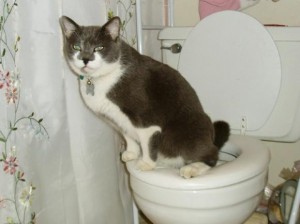Understanding the Risks of Flushing Animal Waste Down the Toilet
Understanding the Risks of Flushing Animal Waste Down the Toilet
Blog Article
Any individual maintains their personal thinking when it comes to 10 Things You Should Never Flush Down The Toilet.

When it concerns throwing away waste, especially animal waste, lots of people often resort to the hassle-free alternative of flushing it down the commode. Nevertheless, this seemingly very easy solution can have significant effects for the atmosphere and public health. In this article, we'll discover why flushing animal waste down the commode is a bad idea and provide alternate methods for proper disposal.
Introduction
Appropriate garbage disposal is crucial for preserving ecological sustainability and public health. While it may seem harmless to purge animal waste down the bathroom, it can result in various issues, both for the environment and human health.
Risks of flushing animal waste
Ecological effect
Flushing pet waste presents damaging germs and pathogens into rivers, which can negatively impact marine ecological communities. These virus can pollute water resources and damage aquatic life, interfering with delicate ecosystems.
Public health concerns
Animal waste has unsafe germs such as E. coli and Salmonella, which can pose severe health and wellness threats to humans. Flushing animal waste down the toilet can infect water products, bring about the spread of diseases and infections.
Alternatives to flushing
As opposed to flushing pet waste down the toilet, there are several alternate disposal approaches that are extra environmentally friendly and sanitary.
Composting
Composting animal waste is an eco-friendly method to take care of it. By composting, organic matter is broken down into nutrient-rich soil, which can be used to feed gardens and plants.
Land fill disposal
Throwing away pet waste in a landfill is an additional option. While not as eco-friendly as composting, it is a much safer alternative to flushing, as it protects against the contamination of water resources.
Family pet garbage disposal systems
There are specific pet waste disposal systems available that securely and hygienically deal with pet waste. These systems typically utilize enzymes to break down waste and get rid of odors.
Actions to proper animal waste disposal
To make certain correct disposal of pet waste, follow these steps:
Scooping and nabbing waste
Frequently scoop and bag pet waste utilizing eco-friendly bags. This protects against waste from contaminating the setting.
Utilizing marked waste bins
Dispose of bagged animal waste in marked waste containers, such as compost bins or garbage dump bins. Stay clear of flushing it down the toilet whatsoever prices.
Cleaning litter boxes and animal areas on a regular basis
Regularly tidy can and animal areas to stop the accumulation of waste and germs. Usage pet-safe cleaning products to maintain hygiene.
Benefits of correct disposal approaches
Taking on correct disposal techniques for pet waste provides several advantages:
Minimized environmental pollution
Proper disposal approaches minimize the threat of environmental pollution, shielding waterways and ecosystems from contamination
Reduced threat of water contamination.
By preventing flushing pet waste down the bathroom, the threat of water contamination is dramatically decreased, securing public health.
Boosted hygiene and hygiene
Correct disposal methods promote better cleanliness and health, developing a safer environment for both humans and pets.
Final thought
Finally, purging animal waste down the commode is unsafe to the setting and public health. By taking on alternative disposal methods and adhering to proper waste management methods, we can reduce the adverse impact of pet waste and contribute to a cleaner, much healthier world.
What To Do With Dog Poo – The Do's And Don'ts Of Disposing Of Faeces
Dog poo bins
Some councils provide dedicated dog waste bins in popular dog-walking areas that can take dog poo that has been bagged but you can legally dispose of dog waste in any public litter bin, as long as it is securely bagged. This also applies to your wheelie bin at home.
Do not flush
Water companies do not recommend flushing dog faeces down the toilet because certain parasites can survive the water processing treatment and are potentially harmful to humans. You should also never consider flushing dog poo that has been bagged down the toilet as the bags will not break down and instead create severe blockages in the sewage system.
In the woods
The Forestry Commission promotes a ‘stick and flick’ method for dealing with waste in the woods. This means finding a stick and using it to flick any poo from off the path so that it is out of the way of other walkers. You could also bury it as long as it is not in an area where there might be livestock.
Livestock
Parasites found in dog poo can be transmitted to livestock if they inadvertently eat infected faeces that has been left on grazing land. This could result in the death of sheep or abortion in cattle so you should always make sure you pick up your dog’s waste in fields where livestock could be present.

We hope you enjoyed reading our part about . Thanks for finding the time to read through our content. So long as you liked our post please do not forget to share it. I praise you for your time. Return soon.
Additional Information Report this page